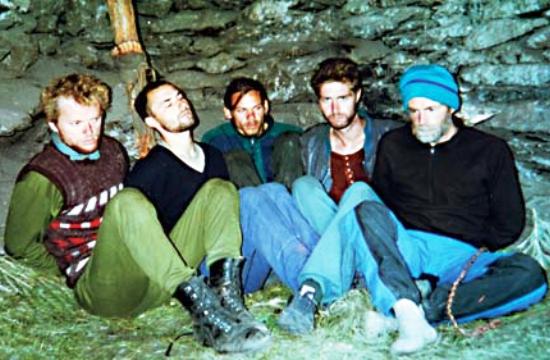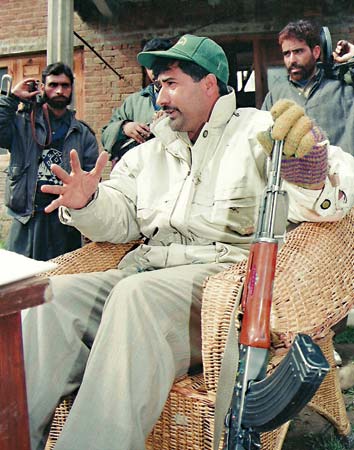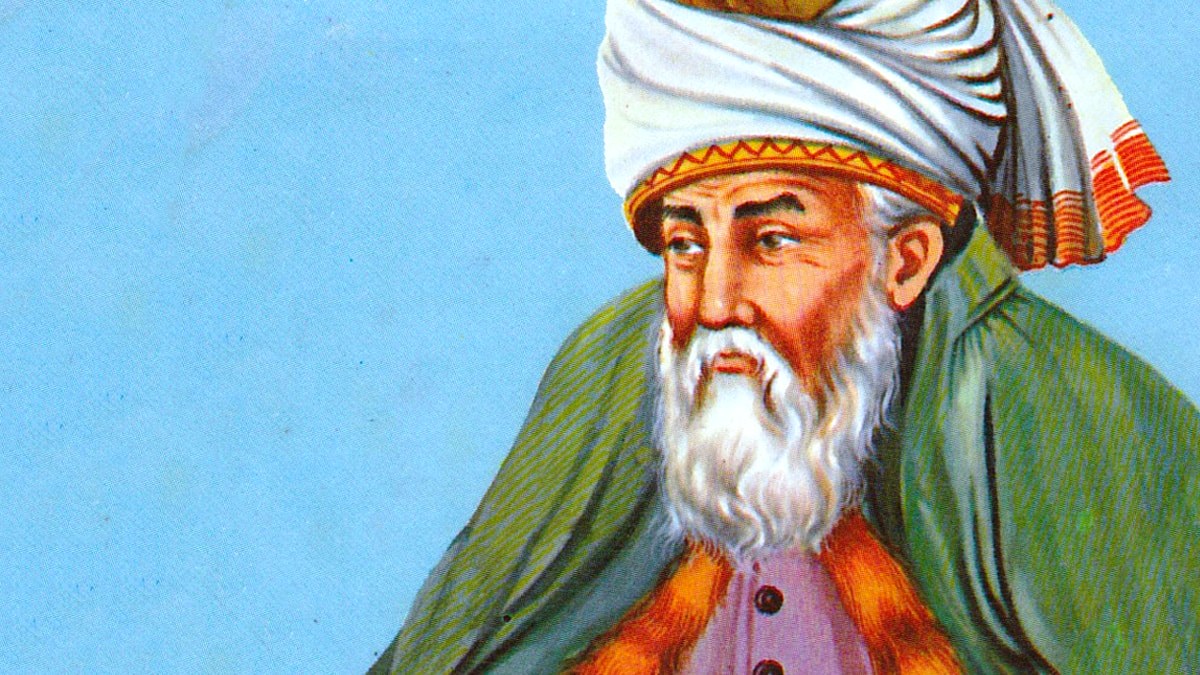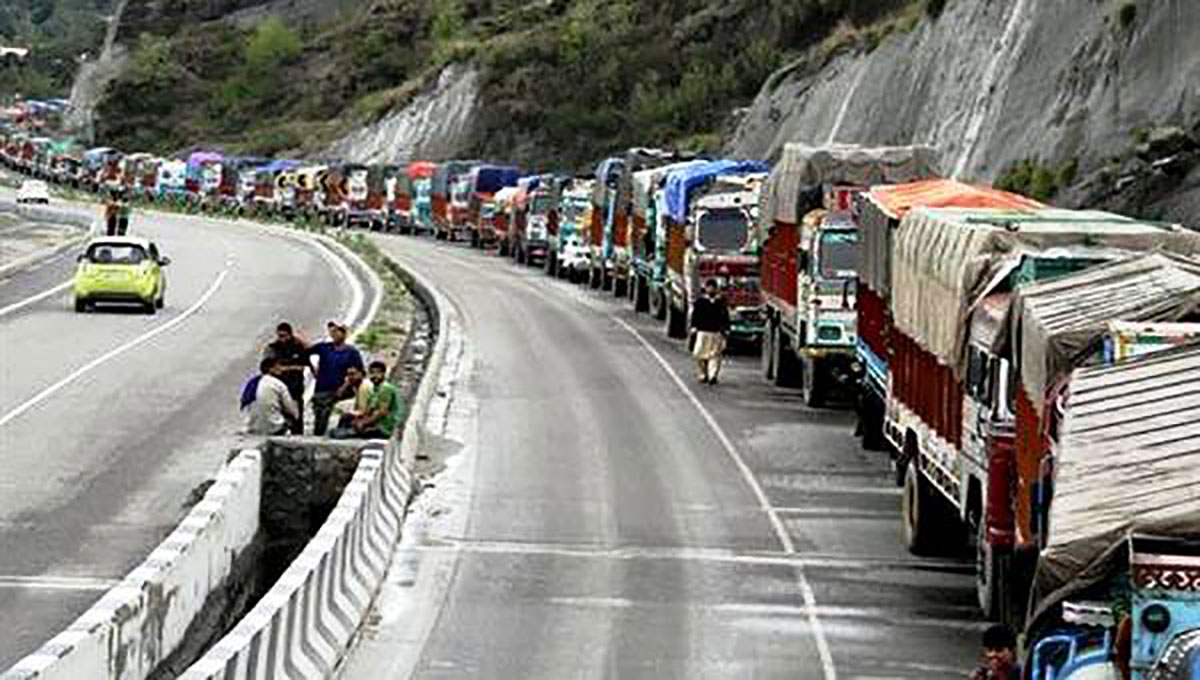
A recently released book ‘The Meadow’ shines the light on some of the darkest days in Kashmir’s contemporary history. In the impeccable piece of investigative journalism, the authors reveal how western trekkers taken hostage by al-Faran, were killed for reasons of State. KASHMIR LIFE reports the sensational conclusions the book draws.
The 1995 kidnapping of five Western trekkers from Pahalgam by a shadowy outfit, al-Faran, was one of the most sensational events in Kashmir’s contemporary history. The militants took the trekkers hostage and sought release of their 21 comrades, mostly non-local fighters. The kidnapping brought the world media to Kashmir and the kidnapping remained in the news for many months till the local assembly elections in 1996 brought about the return of a civilian government.
American nationals Don Hutchings and John Childs and two Briton Keith Mangan, and Paul Wells were kidnapped on July 4, 1995. Childs escaped from his captors on July 8 and was rescued by a state government chopper flying the then security adviser to governor D D Saklani from a mountain pass on the track to cave shrine of Amarnath. The same day, however, al-Faran took German trekker Dirk Hesert and Norwegian Hans Christian Ostro hostage from the same mountain belt. Ostro was beheaded on August 13, 1995. And since then nobody knows anything about the remaining four hostages.
In the subsequent days, German, British and American security agencies flew their experts to Srinagar to supplement the efforts that state’s gubernatorial administration and the security agencies were making to secure the release of the hostages. There were contacts, negotiations and encounters as the families of the hostages roamed around for any clues. Gradually, the case slipped out of the media radar and the story died down. The hostages were never found.
Last fortnight, a book ‘The Meadow, Kashmir 1995 – Where the terror began’ was released in London. Authored by investigative reporters Adrian Levy and Cathy Scott-Clark, the book offers an incisive account of the crisis. For many years, these reporters worked painstakingly collecting great detail from Washington, Germany, London, Oslo to Delhi, Islamabad, Srinagar and south Kashmir where the hostage-taking happened. They met everybody who was somehow involved with the event in whatever capacity. They accessed police investigation reports, heard the audio recordings of the negotiations, met with the police detectives and recreated the entire story.
The ultimate analysis of the book is that the hostage-taking took off at ISI’s behest but concluded the way New Delhi wanted. The objective of the operation, the book alleges, was to show the savagery of the militants and to show Islamabad in a poor light for her support to Kashmir’s ‘violent’ secessionist movement. Offering blow-by-blow accounts of how various security agencies were working at cross-purposes, the 500-page book is the first detailed account on the crisis that is raising more questions than providing answers. While the contents of the book suggest that for most of the period of captivity, the security set up was aware of their location – they were being photographed almost on daily basis when they were in Sukhnoi guesthouse in Wardwan valley. Officially, the government never admitted it. The government permitted the Western negotiators to be in Srinagar but gave them restricted access to detail.
As the negotiations progressed, kidnappers reduced their demands from 21 to four prisoners and finally to the booty – a sum of one crore rupees. Then the talks failed because the reported “breakthrough” becoming front-page news. Desperate to move out of the mountains, the al-Faran finally “sold” the hostages to pro-government militant Azad Nabi who finally mowed them down in Mati-Gawran, the last inhabitations on way to the Margan Top that separates Kashmir Valley from Wadwan valley. The massacre took place on December 29, 2005, the book claims.
Childs Escaped But Why Not Others?
American national John Childs was the only lucky hostage who escaped and managed to reach far away from the hideout till Saklani’s chopper noticed and rescued him. It was darkness and his dysentery became the excuse to make his escape good. But he was not the only hostage who attempted to escape. All others had made serious attempts as well. The book, quoting various people first hand, offers details of as many as seven attempts that the Norwegian kathak dancer Ostro made. Once, he fled from the Sukhnoi guesthouse and actually reached another neighbouring village.
He was caught again by his captors and taken back. Then again, he fled and crossed over a ridge as well but his captors came on horsebacks to take him back. Then he would come out of the hut and wave towards the helicopter that would usually fly over their place of interment.
This would create a situation, the book says that he was finally kept tied with a cot. The captors’ inability to manage the energetic Ostro seemed to be one of the reasons for his brutal end later.
Response Was Fast. Was It?
There were initial hiccups – like soldiers preventing a police officer from moving ahead because they had allegedly sexually assaulted the same lady who was rushing to inform about the kidnapping, but systems emerged in response quickly. Given the involvement of the foreigners, it immediately triggered concerns from various countries and that sent the government working. There were immediately four fronts on which the system reacted to the crisis. Primarily it was the media that needed a response, It was the diplomacy on the other hand. These two fronts were required to suggest that the systems in place are working to do whatever was possible. On the ground, the negotiations were carried out by an IGP and the criminal investigation was simultaneously going on. Then there was another investigation that was taking place at a slightly different front – the intelligence agencies, the armed forces and the Special Operations Group (SOG).

Investigations carried out by the authors suggest the media and diplomacy were being tackled with almost-similar arguments and tit-bits of information. On the investigations front, there was a dichotomy – the negotiations and the ground investigations were managed by the permanent set-ups of the state government and a slightly higher surveillance was managed by the central agencies with the help of the SOG. The coordination in the three set-ups was restricted to the flow of information from the state tiers to the central tier and not vice versa. The picture of the crisis management that the book has painted suggests the central security and intelligence agencies were at the top of the information pyramid and also in the decision-making. The state apparatus took a long time in understanding that they were working at cross-purposes. The Governor’s security advisor was the main level of coordination between the two apparatuses but that was interested in seeking information rather than offering inputs for crisis management.
Did The Negotiator Fail?
After it was established that foreign trekkers are now hostages, the al-Faran contacted Saklani directly. A former soldier, he was holding the security portfolio. But he entrusted the job to IGP (Crime Branch) Rajinder Tikoo to negotiate with the kidnappers. The book suggests that Tikoo was initially unwilling to get into the crisis. It was only after he had a couple of rounds that he was given the silver lining by his boss – the government is not going to release anybody and his job was to keep the guys engaged.
The book in which the negotiator is profusely quoted suggests that his limitations did not come from the shadowy al-Faran. They came from the system he was representing.
Within days after contact with the captors was established on a landline, Tikoo told the authors that it was being eavesdropped. At a later stage, the source of the phone call was located and allegedly raided. This infuriated the kidnappers and when Tikoo went to compliant, nobody took the responsibility. Initially, the negotiator was jotting down the communication for the records. But he felt that things are cooking in a different way at a different level, he felt scared. The first thing was that he started voice-recording to save his own skin. Later, he got a modern radio set – that SOG had seized from militants – and put it to use and the two sides would talk at mutually agreed frequencies.
Reporting to Saklani on a day-to-day basis, Tikoo faced two problems throughout. Firstly, whatever he was doing was getting leaked selectively. Secondly, there were instances suggesting efforts of hunting the kidnappers while negotiations were going on. Despite all these limitations, Tikoo, according to the book, managed to keep talking with the kidnappers’ point-man, a restive young man whom authors suggest to be a Mirpuri resident. Though initially he was not permitted to mingle with the experts from UK, US and Germany, he would sometimes seek suggestions.
It was a success of the negotiations, details of the book suggest, that the demand of the kidnappers fell from 21 to 15 and finally to four. Since enough of time had been consumed by the talks, the restive kidnappers were getting desperate. Finally, they did not reject the idea of actually accepting money. They sought just one crore rupees. But the same night, the same breakthrough crept to the front pages of a Delhi newspaper and hell broke loose. It was the negotiator who surrendered a day after September 17, the last time he took the al-Faran call in which the 786 (code name of the point man) agreed to 108 (nicknamed himself) that he is willing to barter hostages for one crore rupees. The same day the news was out, and he formally requested to be spared and left for Ahmadabad to take care of his uncle who was not well.
Was There Any Criminal Investigation?
That is perhaps one of the most gripping part of the book and sensational too. Criminal investigations also carried out by the Crime (investigation) Branch of the state police was taking place simultaneously. A Squad was set up under the command of a low profile SP rank officer and it was only a 10-member force in plainclothes. Notwithstanding a murder that it is accused of during questioning in Pahalgam itself and ruthless raids it carried out around the villages where the kidnappers moved around, the Squad literally shadowed the kidnappers. Hiring agents, getting some of them from the jail and even recruiting active militants, it is the thrilling part of the book.

While shadowing the al-Faran gang, the Squad would get into every tit-bit including the scratches and the sewage that they had left behind. Days before Ostro was killed, the Squad had informed its headquarters concerns about his safety given his desperation to escape. Its agents included prized assets including one who willingly went to jail for six years to get closer to convicted militants. There, the Squad managed to recruit one of the militants who was spared during interrogation and asked to switch sides for life. Agent A was the main source of the Sukhnoi happenings but the book says the agent was killed by Rashtriya Rifles after ISI tipped it at a time when A was on way to have a quick meeting with the Squad.
The real test the Squad faced was when a desperate al-Faran left the remote valley and descended down the hills. Though there were a series of sightings within days, as recorded by the book on basis of the information that investigators and records provided, the Squad had actually lost them. It was common sense that led the Squad to think that since the entire south Kashmir linking the Pir Panchal was almost liberated from the insurgents and dominated by the pro-government militia, how can that happen.As the pro-government militia refused any cooperation point blank, the Squad finally infiltrated into their ranks. And then it got the entire story of a ‘brotherhood’ that existed on the ground between the fugitives and the private militia government. Only after this operation, it was revealed to the Squad that there is much powerful set up that is working in a different direction in which even the Squad felt as hostages themselves. But the Squad continued chasing the kidnappers and barely missing them by a whisker.
Who Else Was Working?
Police investigations and negotiations notwithstanding, the big daddy of the security grid was watching everything – the central security agencies. The first action, according to people quoted in the book, was sending John Childs back home immediately after he escaped. The decision to which the US government was also a party was the first major hock to the crisis management especially because he was desperately seeking help to rescue his comrades from the Gujjar huts. There is no record of if the state agencies were permitted to record his statement.
Once in Sukhnoi, a chopper would fly routinely and take pictures of the hut where the hostages were kept. Neither of these pieces of evidence was ever shared with the state agencies which were working on the ground. However, they were getting every detail that was with the Crime Branch investigators. A former RAW officer, who finally permitted some of the photographs to be given to the state police, gave entire details of the aerial coverage to the authors saying even the sweat on their face was clear.
While they kept a low profile, the central security agencies, according to the book came openly in the field when the al-Faran shepherded hostages down the hills from Sukhnoi back to the periphery of South Kashmir.
Quoting profusely from actors, players, confidants and informal eyes and ears of the security grid, the book claims that the hostages were taken over by the government-friendly militants who served the hostages well in their hideouts for a long time. One night after the first snowfall, they were taken out into the Mati and Gowran forests, they were shot dead and the locals were forced to bury them in a hole.
Were They Really Killed?
The state government even after Saklani was sent home after Dr Farooq Abdullah took over as the chief minister in the summer of 1996 was maintaining that they have inputs that hostages are alive. But the book claims these statements were bogus because the hostages were killed soon after the first snowfall.
The last-ditch effort was to get Hurriyat involved but they refused point blank. Weather is cold already, there is no food, no secure shelter and nothing possible in the bargain. The increasing realization is that hostages may block the escape of the gang. It actually loses Ostro’s murderer in a fierce encounter. So the gang accepts a friendly offer from pro-government militia to buy the hostages at a premium. The deal is done. The group issues a statement that after an encounter the soldiers have taken over three hostages and the fourth is missing. The book claims it was the announcement of the deal – four lakh rupees, just a fraction of what 786 had agreed earlier.

But the book says it was part of the larger plan to give a final blow to the militancy in the south Kashmir. The friendship between the ideologically diverse groups led to some confidence-building measures that included the pro-government militias offering some arms and ammunition to the insurgents. Then a meeting is scheduled and once the top man of the gang is in, the venue blasts killing the go-between as well. Mission accomplished and the hostages are moved to the last village – Mati and Gawran. They are properly taken care of and that is testified by the Squad member who actually gets in the room and sees them resting under the blankets. Finally, the story ends with the hostages being moved down and a person who witnessed it reveals it to the Squad. An effort is made to trace the ‘hole’ where they were buried but it fails and they don’t try again. The file is closed.
And What About The Media?
Different media reported differently strictly as per the available material. Local media was relying heavily on the al-Faran statements and the scanty information that the government would provide. But it was very basic in nature. The national media would rely on the inputs that the central security agencies would provide. Most of the leaks, which created credibility crisis for the negotiator, according to the book, would be splashed over the front pages of the newspapers publishing from Delhi. These leaks eventually made Tikoo to move out of the scene, claims the book.
The international media tried to investigate the crisis. Some correspondents did move around especially down south to offer something different. It was again an international newspaper that conclusively reported the killing of the hostages in December that was based on the interrogation of a captured member of al-Faran.
Something Human In The Entire Inhuman Tragedy?
It goes to the credit of the Squad that collected hundreds of tit-bits of information suggesting that the hostages never ever lost hope that they will be rescued. They used almost everything – from the paper wrapper of the water bottles to the empty cigarettes packs to write about their location, their desperation and frustration. These writings form the basis of the life the hostages lived in captivity – playing, singing, dancing, and crying. Tragically, the book says German hostage had indicated to his girlfriend that he was influenced by Islam before he was kidnapped.
On this front, it is the Norwegian who emerges the hero of the tragedy as per the details mentioned in the book. He did not just make a series of attempts to flee and fought like a bear but also sent out lots of information about his life in captivity and his resolve. The fascinating part of his contribution is that he knew that he is being executed. A chit that a DSP rank officer recovered from his pocket carried a hell of information. On the hospital table in Srinagar’s cantonment, the officer makes it reach into his undergarments and recovers a lot of notes which he had penned during captivity.
The civilian population, the book reveals never ever supported the hostage-taking. They were forced to work for them by the gang at places where no routine security systems work. Some writings indicated that there were positive responses from some women – apparently cooking for them, in helping them. The interesting part of the story is that people, especially in Wadwan valley, had made attempts, some of them successfully, to record and rewrite what the hostages had written on used and waste paper. In one case, the villagers recovered a water-soaked paper from under a boulder and took to the local teacher who copies it for posterity. One of the wives of the hostages who later travelled to the Valley was fascinated by the accounts she was told.
Problems In The Book?
The book dismantles the official account of the crisis and offers an alternative account to which the agencies involved in the crisis management may have to respond. But there are many factual inaccuracies. It is Margan Top and Hapatnar, not Madran and Hapatnar. And the Police Headquarters at Airport Road came up many years after the hostage crisis was over.















